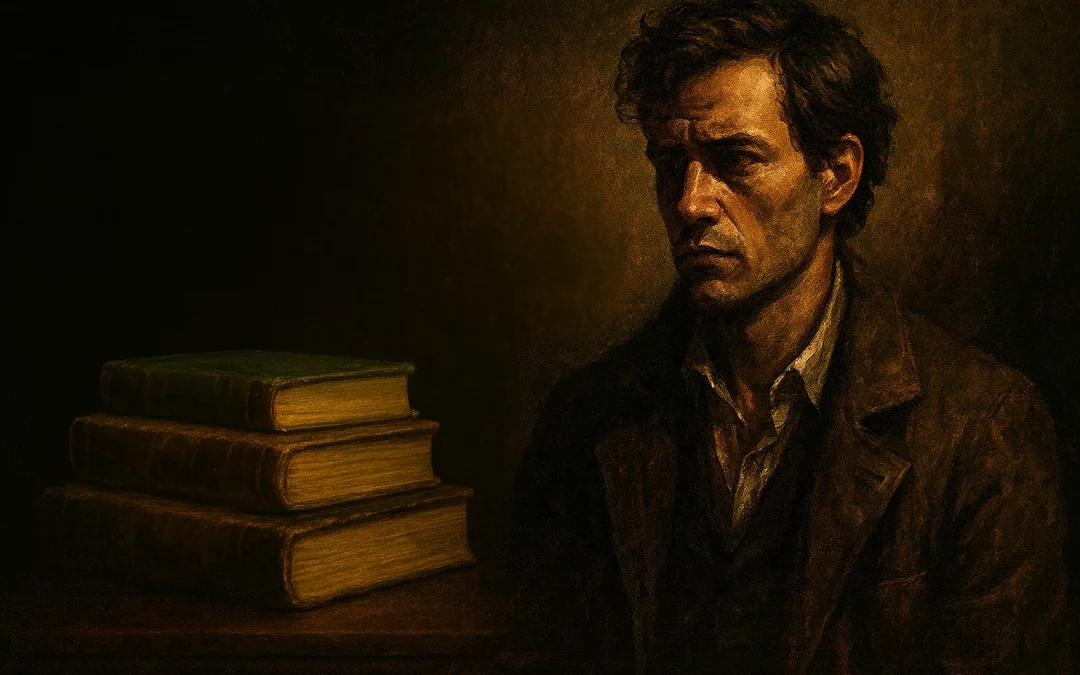Ever wondered what it feels like to live inside someone else’s head? Psychological fiction offers exactly that.
These stories peel back the layers of thought, memory, and motive, letting you experience the world through the most intimate and sometimes unsettling corners of a character’s mind.
What Is Psychological Fiction?
Psychological fiction, sometimes called psychological realism, is a genre that puts the human mind at centre stage. Instead of rushing from one event to the next, these stories linger on thoughts, feelings, and motivations. External action often matters less than the way a character processes it.
This focus sets psychological fiction apart from adjacent genres. For example, a psychological thriller adds suspense, crime, or danger to the mix, while pure psychological fiction draws tension from internal conflict. A character might be wracked with guilt, trapped in obsession, or lost in their own unreliable memories. What matters is not what happens but how it feels inside a character’s head.
Writers often use techniques such as stream of consciousness, interior monologue, and fragmented timelines to make the inner life vivid on the page. The result is a reading experience that can feel more intimate and unsettling than a plot-driven story.
A Brief History of the Genre of Psychological Fiction
While stories about feelings have always existed, the first recognisable psychological novels emerged in the seventeenth and eighteenth centuries, when writers like Madame de Lafayette and Samuel Richardson began probing characters’ motives alongside their actions.
The nineteenth century brought the genre into full bloom. Fyodor Dostoevsky’s Crime and Punishment (1866) remains a touchstone, diving into guilt and paranoia through extended interior monologues. Around the same time, Henry James and Leo Tolstoy mapped the subtleties of human perception and unconscious drives.
In the early twentieth century, modernist writers such as Virginia Woolf, James Joyce, and Marcel Proust revolutionised narrative technique with stream of consciousness and free association, showing that a novel could mimic the rhythms of thought itself.
From mid-century to today, psychological fiction has appeared across both literary and popular writing. Sylvia Plath’s The Bell Jar explored depression and identity, while bestselling thrillers like Gone Girl proved that unreliable narration and interior drama could capture a mass audience.
Notable Psychological Fiction Books to Explore
Let’s start with some classics.
Crime and Punishment (Fyodor Dostoevsky, 1866 – Russia)
A landmark novel of guilt and moral struggle, following Raskolnikov after he commits murder. The suspense comes not from a chase but from his spiralling conscience.
No Longer Human (Osamu Dazai, 1948 – Japan)
A raw, confessional portrait of alienation and despair. The narrator’s sense of being “unqualified to be human” still resonates with readers today.
The Tunnel (Ernesto Sábato, 1948 – Argentina)
A chilling account of obsession told by a painter who murders the woman he loves. His narration pulls the reader into the claustrophobic logic of jealousy and isolation.
The Bell Jar (Sylvia Plath, 1963 – USA)
Semi-autobiographical, this novel depicts a young woman’s descent into depression. The “bell jar” becomes a symbol for suffocation under mental illness and societal expectation.
Lord of the Flies (William Golding, 1954 – UK)
An allegory of civilisation and savagery, but also a study in group psychology and fear. The boys’ collapse into violence reveals the darker corners of human nature.
Now, let’s turn to some contemporary psychological fiction books.
Gone Girl (Gillian Flynn, 2012 – USA)
A twisty bestseller that redefined unreliable narration. Beneath the missing-wife mystery lies a portrait of manipulation, resentment, and the psychology of marriage.
The Girl on the Train (Paula Hawkins, 2015 – UK)
Told through the eyes of a troubled, blackout-prone narrator, this novel explores memory, self-deception, and obsession, all wrapped in a suburban mystery.
Son of the Axe (D. P. Martinez, 2025 – UK)
A man obsessed with his family history who discovers a 12th-century axe once wielded by an ancestor—an object that triggers visions of the past and threatens to unravel his career, his marriage, and his sanity.
These examples highlight the variety within the genre: confessional realism, modernist experimentation, allegory, and page-turning suspense can all count as psychological fiction when they prioritise the mind over external action.
How to Read Psychological Fiction
If you’re new to the genre, here are a few tips to make the most of it:
- Tune into the inner voice. The real story lies in thoughts, memories, and fragments of perception. Slow down and let them unfold.
- Expect unreliable narrators. Doubt what you’re told. Look for gaps, contradictions, and subtle clues.
- Watch for symbols. Objects and settings often mirror a character’s mental state—the “bell jar” or a decaying city street may be metaphors in disguise.
- Embrace ambiguity. Psychological fiction rarely offers tidy resolutions. Characters can be flawed, contradictory, and morally grey.
- Savour the pacing. The drama builds in small moments of reflection rather than big action scenes.
Psychological fiction invites you to step into someone else’s mind and stay there, for better or worse. It can be challenging, but also deeply rewarding.
Whether you choose a classic like Crime and Punishment or a contemporary page-turner like Gone Girl, you’ll find stories that illuminate the hidden battles we all fight inside ourselves.

D.P. Martinez is a contemporary fantasy author specialising in urban fantasy and magical realism. He holds an M.A. in English Literature from the University of Greenwich, where he focused on Literary London. His research explored metaphorical representations of London in urban fantasy. He has written hundreds of articles and several books across both fiction and non-fiction.

